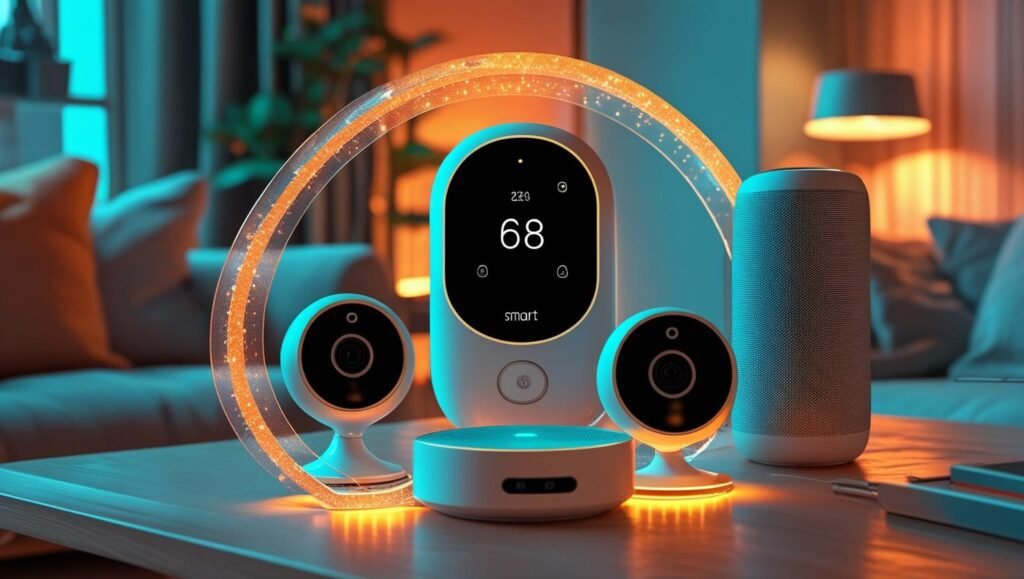IoT Devices: How to Secure Your Network Now

Picture this: your smart speaker starts playing music at midnight, or your doorbell camera sends weird alerts. Spooky, right? IoT devices, like smart lights, thermostats, and cameras, make your home fun and convenient. But they can also let hackers into your network if you’re not careful. Don’t worry! This guide shares easy, practical ways to secure your IoT devices and protect your smart home. Let’s get started and keep your tech safe!
Understanding IoT Devices and Their Risks
IoT devices are everyday gadgets that connect to the internet. Your smart TV, fridge, or even a connected coffee maker counts. They talk to each other through your Wi-Fi, making life easier. But without proper security, these devices can be a hacker’s playground. Knowing the risks helps you stay one step ahead.
Why IoT Devices Are Vulnerable
Many IoT devices come with weak security settings. Default passwords or old software make them easy targets. Hackers can use them to spy, steal data, or mess with your network. Securing your IoT devices stops these threats before they start.
Real-Life Risks of Unsecured IoT Devices
Imagine a hacker watching through your security camera or turning off your smart alarm. These aren’t just movie plots—they happen! Unprotected IoT devices can leak personal info or let hackers into your home network. Taking action now keeps your home safe.
Easy Steps to Lock Down Your IoT Devices
You don’t need to be a tech wizard to secure your IoT devices. These simple steps will strengthen your network and keep hackers out. Let’s walk through them together.
1. Set Strong, Unique Passwords
Every IoT device comes with a default password, like “admin” or “password.” Hackers know these by heart. Change them to strong passwords with letters, numbers, and symbols. Make each one at least 12 characters long for extra safety.
2. Keep Your Devices Updated
Manufacturers send out updates to fix security holes in IoT devices. Check for updates every month through the device’s app or website. Installing them takes just a few minutes and keeps your gadgets protected.
3. Strengthen Your Wi-Fi Security
Your Wi-Fi is the backbone of your IoT devices. Use a tough password and choose WPA3 encryption if your router supports it. Never connect your devices to public Wi-Fi—it’s like leaving your door wide open.
4. Set Up a Guest Network
Put your IoT devices on a separate guest network. This keeps them away from your main devices, like your phone or computer. If a hacker gets into a smart bulb, they can’t easily reach your sensitive data. Most routers make this easy to set up.
5. Turn Off Extra Features
Some IoT devices have features you don’t use, like remote access or microphones. These can be weak spots for hackers. Go into your device settings and disable anything you don’t need. For example, turn off the camera on a smart speaker if you only play music.
6. Add a Firewall for Extra Protection
A firewall is like a security guard for your network. It stops suspicious traffic from reaching your IoT devices. Check your router settings to enable its built-in firewall. You can also get a standalone firewall for added peace of mind.
Helpful Tools to Protect Your IoT Devices
Some tools make securing your IoT devices a breeze. Here’s a table of handy options to boost your smart home’s safety.
| Tool | What It Does | Why It’s Useful |
|---|---|---|
| Password Manager | Creates and saves strong passwords | Keeps your passwords safe and organized |
| VPN | Hides your internet traffic | Protects data from IoT devices |
| Network Scanner | Watches devices on your network | Spots unfamiliar or suspicious devices |
These tools are easy to use and add an extra shield to your IoT devices.

Mistakes That Put Your IoT Devices at Risk
Even careful people can slip up. Avoid these common errors to keep your IoT devices secure.
Forgetting to Update Devices
Skipping updates leaves your IoT devices open to attacks. Updates fix bugs that hackers can exploit. Set a calendar reminder to check for updates monthly. It’s a small step with big rewards.
Using Simple Passwords
Weak passwords, like “123456,” are a hacker’s dream. Always use complex passwords for your IoT devices. A password manager can help you create and remember them without stress.
Mixing IoT and Personal Devices
Connecting IoT devices to the same network as your laptop or phone is risky. If a hacker breaks in, they can access everything. A guest network keeps things separate and safe.
Extra Tips for Super-Strong Security
Ready to level up? These advanced tips make your IoT devices even harder to hack.
Watch Your Network Activity
Use a network scanner to check what your IoT devices are doing. If your smart thermostat is sending data at 3 a.m., that’s a red flag. Tools like Fing or GlassWire can alert you to weird behavior.
Use VLANs for Advanced Separation
If your router supports Virtual Local Area Networks (VLANs), use them to split your network further. This puts each IoT device in its own secure zone. It’s a bit technical but worth it for extra protection.
Turn Off UPnP Settings
Universal Plug and Play (UPnP) makes connecting IoT devices easy, but it’s not safe. Hackers can exploit it to slip into your network. Disable UPnP in your router settings for better security.
Why Securing IoT Devices Is Urgent
More IoT devices are popping up every day. By 2025, experts predict billions will be connected worldwide. Each one could be a doorway for hackers if left unsecured. Protecting your IoT devices now stops problems like data leaks or device takeovers. It also lets you enjoy your smart home worry-free.
Conclusion
Securing your IoT devices is simple and worth the effort. Use strong passwords, keep devices updated, and set up a guest network. Avoid mistakes like skipping updates or using weak passwords. Tools like password managers and firewalls add extra protection. Start these steps today to keep your smart home safe and sound. You’ve got this!
FAQs
How can I tell if my IoT device is compromised?
Check for strange activity, like lights turning on randomly or slow internet. Use a network scanner to spot odd connections. If something feels wrong, reset the device and update its password.
Do I need tech skills to secure IoT devices?
Nope! Basic steps like changing passwords or checking updates are easy for anyone. Follow this guide, and you’ll secure your IoT devices without any tech headaches.
How often should I check for device updates?
Look for updates every month. Most IoT devices have apps or websites that make it quick to check. Regular updates keep your devices safe from new threats.
What’s the fastest way to secure my IoT devices?
Change default passwords and set up a guest network. These two steps take just a few minutes and make your IoT devices much harder for hackers to target.
Read more: Malware Detection: Can AI Block IoT DDoS Attacks Now?




